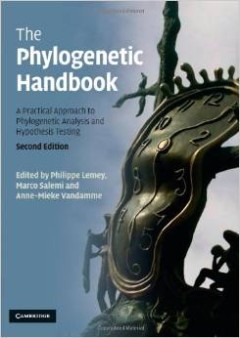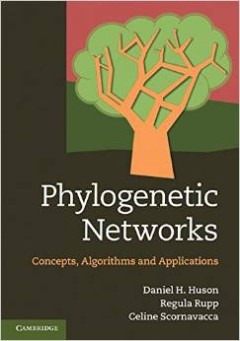Filter by

The evolution of phylogenetic systematics
The Evolution of Phylogenetic Systematics aims to make sense of the rise of phylogenetic systematics—its methods, its objects of study, and its theoretical foundations—with contributions from historians, philosophers, and biologists. This volume articulates an intellectual agenda for the study of systematics and taxonomy in a way that connects classification with larger historical themes in…
- Edition
- -
- ISBN/ISSN
- 9780520276581
- Collation
- viii, 311 p. : ill. : ind. ; 24 cm.
- Series Title
- -
- Call Number
- 578.012 Evo

Inferring phylogenies
Phylogenies (evolutionary trees) are basic to thinking about and analyzing differences between species. Statistical, computational, and algorithmic work on them has been ongoing for four decades, with great advances in understanding. Yet no book has summarized this work until now. Inferring Phylogenies explains clearly the assumptions and logic of making inferences about phylogenies, and using …
- Edition
- -
- ISBN/ISSN
- 9780878931774
- Collation
- xx, 664 p. : ill. : ind. ; 23 cm.
- Series Title
- -
- Call Number
- 578.012 Fel i

The phylogenetic handbook : a practical approach to phylogenetic analysis and…
The Phylogenetic Handbook is a broad, hands on guide to theory and practice of nucleotide and protein phylogenetic analysis. This second edition includes six new chapters, covering topics such as Bayesian inference, tree topology testing and the impact of recombination on phylogenies, as well as a detailed section on molecular adaptation. The book has a stronger focus on hypothesis testing than…
- Edition
- 2nd
- ISBN/ISSN
- 9780521730716
- Collation
- xxvi, 723 p. : ill. : ind. ; 26 cm.
- Series Title
- -
- Call Number
- 578.012 Phy

Phylogenetics : theory and practice of phylogenetic systematics
The long-awaited revision of the industry standard on phylogenetics Since the publication of the first edition of this landmark volume more than twenty-five years ago, phylogenetic systematics has taken its place as the dominant paradigm of systematic biology. It has profoundly influenced the way scientists study evolution, and has seen many theoretical and technical advances as the field has …
- Edition
- 2nd
- ISBN/ISSN
- 9780470905968
- Collation
- xvi, 406 p. : ill. : ind. ; 26 cm.
- Series Title
- -
- Call Number
- 578.012 Wil p

Phylogenetic networks : concepts, algorithms and applications
The evolutionary history of species is traditionally represented using a rooted phylogenetic tree. However, when reticulate events such as hybridization, horizontal gene transfer or recombination are believed to be involved, phylogenetic networks that can accommodate non-treelike evolution have an important role to play. This book provides the first interdisciplinary overview of phylogenetic ne…
- Edition
- -
- ISBN/ISSN
- 9780521755962
- Collation
- xii, 362 p. : ill. : ind. ; 25 cm.
- Series Title
- -
- Call Number
- 578.012 Hus p
 Computer Science, Information & General Works
Computer Science, Information & General Works  Philosophy & Psychology
Philosophy & Psychology  Religion
Religion  Social Sciences
Social Sciences  Language
Language  Pure Science
Pure Science  Applied Sciences
Applied Sciences  Art & Recreation
Art & Recreation  Literature
Literature  History & Geography
History & Geography